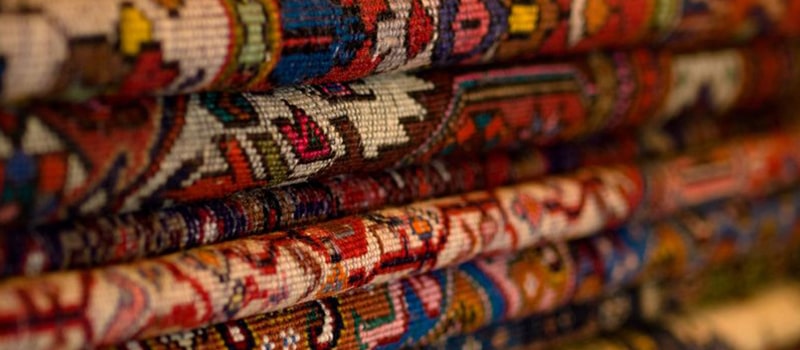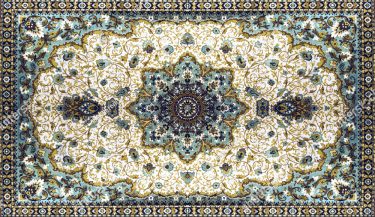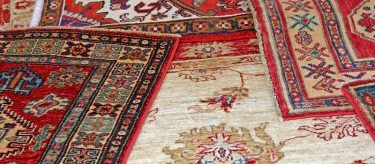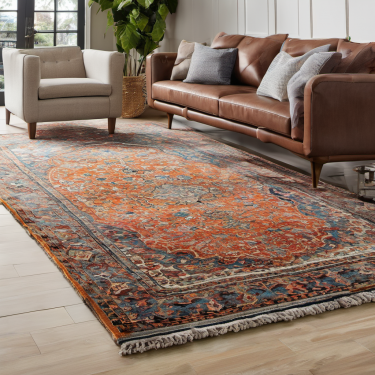Why are Persian Rugs So Valuable as an Asset?
Home » Green Carpet Blog » Carpet Care » Why are Persian Rugs So Valuable as an Asset?


Revered by interior designers and antique enthusiasts alike, Persian rugs are incredibly popular for their intricate designs and beauty. Not only this, but Persian rugs also happen to be extremely high-quality, much better than any other kind of floor covering.
While all rugs and carpets can enhance the beauty of your home and provide a soft and comforting floor to walk on, Persian rugs are much more. Many factors contribute to the beauty, demand, and market value of these rugs, setting them apart. You may have also noticed Persian rugs to be highly expensive.
And although you need to have a good budget for purchasing a Persian rug, many people don’t hesitate from spending a lot on this type of floor covering. A lot of people are confused about why they should spend so much on Persian rugs.
There may be many questions popping into your mind regarding the value of Persian rugs. If you wish to know what makes these rugs a valuable investment, read on to find out.
The Origin of Persian Rugs
First and foremost, Persian makes for a valuable asset due to their rich history. The storied history traces back to around 2500 years from today. According to many historians, carpet weaving began during the 6th Century BC in the Persian Empire.
During this time, Cyrus the Great was the ruling power. What persuaded the Persians to weave beautiful carpets was actually the ruler’s love and passion for rugs. According to numerous claims, even his tomb remains strewn with numerous valuable and expensive rugs.
Although it began during Cyrus the Great’s time, it was not until the 1500s that Persian rugs grew in popularity. The wide traveling from the European Capitals to the Middle East through trade routes gained some recognition for Persian rugs of Iran during the 1500s.
Once the French, Dutch, and British successfully established trading posts across Middle Eastern countries, Persia began to trade with the West. As a result, the Europeans were obsessed with the beauty of Persian rugs. Not to mention, they considered these flow coverings precious works of art.
After the European elite expressed their love for Persian rugs, the beautiful floor coverings became a status symbol. Even today, Persian rugs are highly sought-after all across the world.
1. Design and Craftsmanship
As mentioned earlier, Persian rugs first received recognition for their beauty. The intricate, attractive, and eye-catching designs of Persian rugs add a lot of value. These works of art with rich colors and fantastical patterns use natural colors for dye and are made with high-quality materials like silk, cotton, and wool.
While the designs are all unique on their own, they are mostly inspired by the area of manufacture. For example, the patterns on a Persian rug highly symbolize the village or city it was made in. This design also largely affects the value of a rug. For instance, a rug with executed designs from Isfahan, Kashan, Nain, Kerman, or Tabriz is considered extremely high-value.
The craftsmanship that goes in every step of the making process increases the market value and demand for Persian rugs. Not to mention, the craftsmanship and intricate detailing also call for better care. So, hiring a professional rug cleaning service for your Persian rug is always best.
2. Time
Another factor that makes Persian rugs so valuable and preferred by all rug aficionados is the time that goes into the manufacturing. This directly comes from the fact that artisans weave these rugs by hand. From sourcing all the materials and making the Persian rugs, everything is done manually. The manufacturers do not make use of any machinery in any of the making stages.
The entire process of weaving one rug takes up a lot of time. You can take the example of knitting or crocheting, except that weaving a rug is 100 times more demanding. This is especially much more time-consuming because of the unique and intricate designs.
Many Persian rugs even take months to complete, despite spending most part of each day on weaving. On the other hand, some of the finest Persian rugs in history have also taken years to be made.
3. Material
The materials used to make Persian rugs are a huge determining factor when it comes to the price, market value, and demand. It should not come as a surprise that the raw materials for weaving a Persian rug are the best quality possible.
Weavers search for the best raw materials before tying the first knot of the rug. This suggests that there is also quite a lot of upfront cost that goes into finding the best type of material. This is also the reason that Persian rugs with a pool pile on wool foundation cost the least. Weavers mostly get this wool by shearing their own sheep.
Other Persian rugs are silk-on-silk, qum silk, combination silk, and wool and cotton. Silk thread weaving on a silk foundation is the most time-consuming and detailed, hence also the most expensive.
Qum silk Persian rugs come second, while combination silk rugs use silk fibers on wool or cotton foundation. On the other hand, most Persian rugs are wool-and-cotton as they are highly detailed while also being very durable.
4. Hand-Knotted Construction
The intricate designs and complex patterns of Persian rugs are the qualities that set them apart from all other kinds of rugs. It is almost too hard to believe that weavers perform the entire job of weaving these rugs. They must use be very careful during the process to unfold a unique design that is also flawless at the same time.
Not only does this take time, but also a lot of experience and skills. Moreover, a lot goes into the knot construction of one Persian rug, from the specific Persian knot to the knot count.
Also known as the asymmetrical knot, a Persian knot is quite different than regular weaving knot patterns. The whole yarn completes a full circle around one warp thread. Then, the weaver slips it under the adjacent thread before pulling it through. This entire process forms one Persian knot. This type of knot is especially useful for intricate designs due to its tightness.
On the other hand, the knot count also makes quite a significant difference –the higher the count, the better the precision of the design.
5. Bottom Line
Persian rugs are extremely valuable as an asset due to their rich, storied history and unmatchable beauty. These rugs make for a great investment as they not only enhance your interior but also remain timeless. Not to mention, Persian rugs also have a high market value and demand due to the unique craftsmanship and time that goes into the making as well as the materials and construction methods.


Categories
Carpets
Oriental Rug



